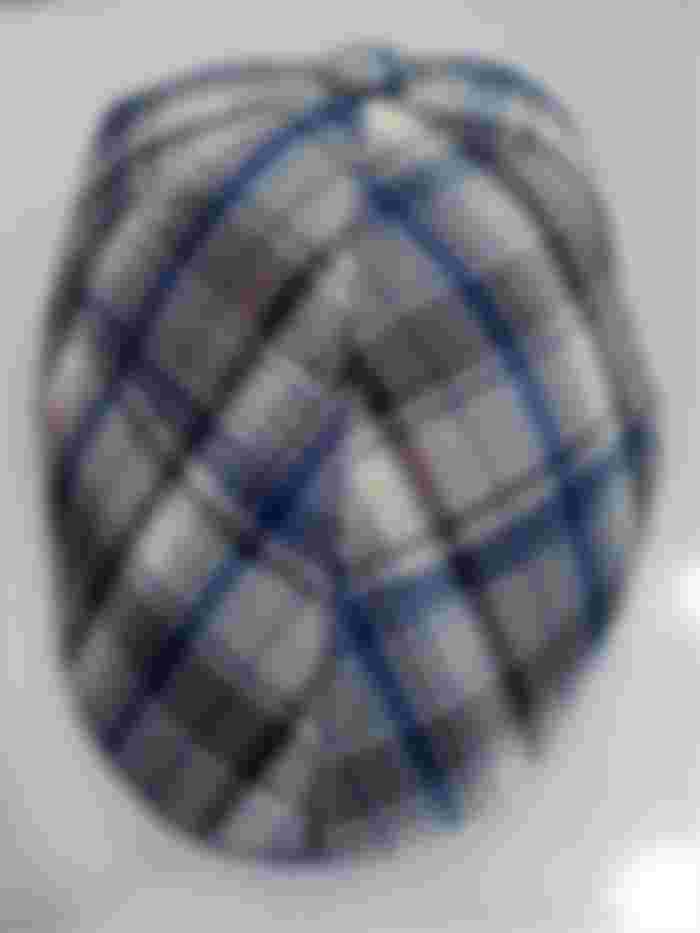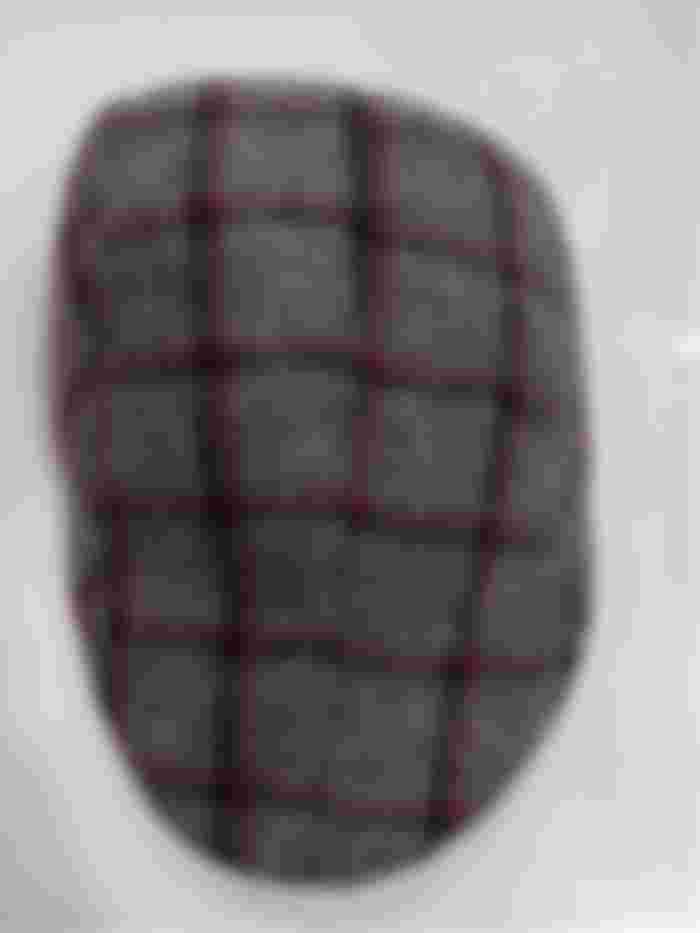This is article about cap busness i hope you will enjoy this article
A hat is a type of wearable that is used to cover the head. The hat is the equivalent of a western 'hat' that also protects against cold and sun. Members of the uniformed forces, such as the army police, cover their heads with special hats. The nurses at the hospital were on duty wearing hats. In the kitchen, keep the head covered with a cooking cap so that the hair on the head does not fall into the food. Cricket and baseball players usually wear hats. The hat structure differs from the hat, headband and helmet.
Consumers of Muslim men. It can be sold at Baitul Mukarram in Dhaka and all the shops in the country. It is in great demand in Indonesia and Sudan. So there are opportunities for export.
Potential benefits:
It costs 20 to 50 rupees to make a hat. The selling price is 30 to 60 rupees.
Necessary materials
Fabric, needle-thread, scissors, sewing machine, design paper and blue.
Preparation method

First the cloth has to be cut according to the size of the hat. Then put design paper on the top of the hat cloth and print it with blue. You have to work with the needle-thread on the imprint. Be careful not to overdo it. This time the cloth was sewn around according to the size of the hat
With Eid ahead, Bhola's Nakshi Tupi Palli has become louder. The work of making hats is going on day and night. No one has time just to sit down. Although the demand for hats is all year round, the demand increases several times during the Eid season. Craftsmen are now working day and night to meet the additional demand for hats. Along with the male members of the family, the girls are also sewing hats and adding extra income to the family. Even many students are now earning extra income by sewing hats in their spare time.
The hats made here meet the demand of the country and are being exported to various countries in the Middle East. However, they lag far behind due to lack of modern facilities. The artisans think that the industry will expand further if they get the benefit of government financial loans.
It has been learned that a few villages of Bapta Union of Bhola Sadar Upazila have been visited and even a few years ago many families there were financially indigent. Many spent their days in despair with their families. Nothing was lacking in them. However, the nakshi hat has changed their destiny this time.
Some of the women hat makers said that they got involved in hat making through Feroz Mia, a local agent in the village. Now they make hats sitting at home. By selling a hat, they get 300 to 400 rupees. The more hats you can make in a month, the more money you can earn.

According to the artisans, there are 2,000 women artisans of Nakshi hats in Bapta, Banglabazar, Daulatkhan and Char Fashion in the district. All these artisans make hats and sell them to local wholesalers. Wholesalers again sell Feni hats to wholesalers. From there it goes directly to various countries in the Middle East including Qatar, Kuwait, Oman.
It has been seen on the spot that the village of Bapta in rural Bhola is now busy in making hats. No one has time to spend lazy time. Everyone is busy making hats. The women are making these hats with perfect designs with foreign Than cloth, local yarn and needles.
Jahangir Mollah, a wholesaler of Nakshi hats, said, "I have been working with this business for about 15 years. Financially I am much more prosperous now. There is a huge demand for foreign embroidered hats and the interest of many more in this profession has increased.
With the help of the government, the artisans of making hats here will play a role in the development of Bhola and the country with more interest.
About 30 hat factories have been set up at Rajapur in Daganbhuiyan, Feni. Bahari hats are being made in these small factories in the vicinity of Belayet Hossain's house in Joynarayanpur village. These hats are going to the Middle East, Africa and other countries.

Desi hats are most appreciated in Oman. Apart from this, there is a demand for these hats in different countries including Tanzania, Somalia, Qatar and Nigeria. Belayet has already become self-sufficient by going into the hat business. At the same time, Daganbhuiyan, Senbagh, Nangalkot, Companiganj, Sonagazi, Feni Sadar, Chagalnaiya and some of the surrounding upazilas have created employment for about 50,000 women.
Belayet migrated to Muscat, the capital of Oman, in 1981 in search of fortune. There he saw the first embroidered hat on the heads of the locals. From then on he became interested in learning how to make it. For this he moved to Salalah, another city in Oman. There he found a factory to make embroidered bahari hats and tried to learn to work
There he met Hanif, a hat maker from Punjab, Pakistan. Belayet started working as his collaborator.
In just six months, he mastered the technique of making hats and started making hats with his own shop in Salala. In 1990, he returned to Muscat and opened a hat showroom there.
Three years later, he returned to the country and started a hat factory called Seven Star Handicrafts in his village Joynarayanpur. At present 47 artisans are working in his factory.
Belayet said that he has a big agent in different districts. These agents work with different upazilas of Feni, Patuakhali, Noakhali, Bhola, Companyganj, Mymensingh, Sylhet, Laxmipur, Ramgati, Nangalakot, Chauddagram, Bagerhat, Brahmanb They supplied Naxi printed caps among these women in these areas. And women are making money by designing the hat. If it is 10 to 15 thousand cap, send it to the showroom of his Oman's mascot through courier service.
There are so many more of these caps. The capacity of the hat was sold at Tk 3,500 to 5 thousand taka. Jhara Akhter of Gazaria village said that if working properly, it takes 25 days to 1 month to make a hat in a hat. Ghanahar Begum of Omarabad said that by adding Naxis, adding some money with her husband's income and good The day is cutting.

Rabiul Alam Revolution from Pirgachha (Rangpur): Hat workers are making a hat by working hard due to extensive presence in different countries of the Middle East. Hat workers with captive caps are now being exported to different countries of the Middle East including Oman, Saudi Arabia, Qatar and Japan. And this has created opportunities for about 25 thousand women in the village poor. In addition to household work, families have won poverty by earning prices. Abdiganj of the Pirgacha upazila of Rangpur, almost thousands of women in Italy of Italy's Hasna village are doing this. Not only in Pirgacha upazila, Rangpur Sadar, Kaunia, Lalmonirhat's Teesta Char, Women of Various villages of Kurigram district made themselves self-reliant. Hafez Abdul Awal, Hafez Abdul Awal village of Balapara Union of Kaunia upazila of Rangpur. His hat was the name 'MH Hat Factory'. Abdul Awal's success in making caps was known that he used to work as an Imam of Sylhet Textile Jame Mosque. After the transfer of Kurigram textile matches. Then the government announced compulsory retirement in 2002, he retired. During this time, he received three and a half lakh rupees from the government due to retirement. Sitting for a while spent about one lakh rupees. Then think of thinking that money will do something with money, so that people and the neglected people of the society are also benefited. At this time, he knows that many people are taking caps from Feni and Noakhali beside the village. Later, in 2005, Feni went through a person who has been well-known. At that time, he trained a capture of a capture of a capture of Abul Khair. Then came home with 300 pieces of caps and other accessories. After finishing their work with a few women in the side of the house and sending them to Feni. The owner Abul Khair was very happy to see the work. For this, he was given 500 rupees for each hat made. Without all expenditure, his profit in every hat is 40 to 50 taka. This is how its business begins. 50 motorized staves to buy itself with five lakhs of retirement and land mortgages. Work with those machines, captuit and embroidery work. Office and factory rented a house in Balapara in the house. Gently tend to extend his business. Tahura Begum of Harishwar village of Kaania upazila. One of his two boys. The husband died long ago. Only four centuries of Vita to say land-zirat in the world. Tahura said, the husband runs the family with wages. After he died, there was a lot of trouble after eating the family. Then Hafez Awal took training for one and a half months in the factory of the cap. Started the work of making caps. He said, it does not have to eat anymore, but the family is going well. He said that his work is inserted thick yarn around the hat. Who is located in regionally said. In this he got 20 rupees for each hat. It earns two and a half to three thousand taka. Suraiya Begum, a student of Shahidbag union, said, when I read in the XI class. At one time, education was closed due to lack of money. Now I work the cost of my writing by making a hat. Along with the parents of the parents also give spending some family.

Kennier Jayanti Queen said her husband worked in an NGO. The salary does not get too much. So he worked in the top of the top. He also said that more than three times in the month can not be designed. Three hat designs are one thousand 200 rupees, with which the husband and a girl are well-cut. MH Hat Factory Supervisor Khorshed Alam said, "We turn to the village in the village and to design with women with hats. When the design becomes a back, it will bring back the money. In this we get Tk 20 per pap. Mahmudia Handicraft Hat (MH Hat), Mahmudul Hasan, son of Hafez Abdul Awal, owner of the factory, said that most of his parents are in the need of business. They have a contract with Oman's businessman Selim Mia. Since then, they themselves are exporters of Oman. He said that now 300 to 400 caps are being made in a week. Regarding the cost of the captain of the cap, Mahmudul Hasan said that the cost of yarn, clothes, transportation, electricity, labor, including other costs, including 500 to 515 taka. The cost of Oman reached Rs 600 to 615 taka. The hat he sold 650 to 670 taka. It will be available at 50 to 70 rupees per hat excluding all costs. He said that there are some business debt from NGOs. Which has to pay many interests. When the money was found at low interest, the business could be increased, income could also be done more. Exporting one thousand 500 to 1,600 hats in the month. From this, the income is about 90 to 95 thousand taka. But income is not the same in all months. He said that in this hat, there was a work on the good clothes. As a result, the prices of the hat are more likely to read the price. This hat is not sold in our country. These caps are exportable to attract foreign buyers.





read.cash fund: $ 191,640.36 | Pledge read.cash
$ 0.00Habiba22 Cap Busness 6 16 0 EXC BOOST Avatar for Rafin678 Written by Rafin678 127 Subscribed 4 days ago In community: BD Buddies(35de) This is article about cap busness i hope you will enjoy this article A hat is a type of wearable that is used to cover the head. The hat is the equivalent of a western 'hat' that also protects against cold and sun. Members of the uniformed forces, such as the army police, cover their heads with special hats. The nurses at the hospital were on duty wearing hats. In the kitchen, keep the head covered with a cooking cap so that the hair on the head does not fall into the food. Cricket and baseball players usually wear hats. The hat structure differs from the hat, headband and helmet.
Consumers of Muslim men. It can be sold at Baitul Mukarram in Dhaka and all the shops in the country. It is in great demand in Indonesia and Sudan. So there are opportunities for export.
Potential benefits:
It costs 20 to 50 rupees to make a hat. The selling price is 30 to 60 rupees.
Necessary materials
Fabric, needle-thread, scissors, sewing machine, design paper and blue.
Preparation method
First the cloth has to be cut according to the size of the hat. Then put design paper on the top of the hat cloth and print it with blue. You have to work with the needle-thread on the imprint. Be careful not to overdo it. This time the cloth was sewn around according to the size of the hat
With Eid ahead, Bhola's Nakshi Tupi Palli has become louder. The work of making hats is going on day and night. No one has time just to sit down. Although the demand for hats is all year round, the demand increases several times during the Eid season. Craftsmen are now working day and night to meet the additional demand for hats. Along with the male members of the family, the girls are also sewing hats and adding extra income to the family. Even many students are now earning extra income by sewing hats in their spare time.
The hats made here meet the demand of the country and are being exported to various countries in the Middle East. However, they lag far behind due to lack of modern facilities. The artisans think that the industry will expand further if they get the benefit of government financial loans.
It has been learned that a few villages of Bapta Union of Bhola Sadar Upazila have been visited and even a few years ago many families there were financially indigent. Many spent their days in despair with their families. Nothing was lacking in them. However, the nakshi hat has changed their destiny this time.
Some of the women hat makers said that they got involved in hat making through Feroz Mia, a local agent in the village. Now they make hats sitting at home. By selling a hat, they get 300 to 400 rupees. The more hats you can make in a month, the more money you can earn.
According to the artisans, there are 2,000 women artisans of Nakshi hats in Bapta, Banglabazar, Daulatkhan and Char Fashion in the district. All these artisans make hats and sell them to local wholesalers. Wholesalers again sell Feni hats to wholesalers. From there it goes directly to various countries in the Middle East including Qatar, Kuwait, Oman.
It has been seen on the spot that the village of Bapta in rural Bhola is now busy in making hats. No one has time to spend lazy time. Everyone is busy making hats. The women are making these hats with perfect designs with foreign Than cloth, local yarn and needles.
Jahangir Mollah, a wholesaler of Nakshi hats, said, "I have been working with this business for about 15 years. Financially I am much more prosperous now. There is a huge demand for foreign embroidered hats and the interest of many more in this profession has increased.
With the help of the government, the artisans of making hats here will play a role in the development of Bhola and the country with more interest.
About 30 hat factories have been set up at Rajapur in Daganbhuiyan, Feni. Bahari hats are being made in these small factories in the vicinity of Belayet Hossain's house in Joynarayanpur village. These hats are going to the Middle East, Africa and other countries.
Desi hats are most appreciated in Oman. Apart from this, there is a demand for these hats in different countries including Tanzania, Somalia, Qatar and Nigeria. Belayet has already become self-sufficient by going into the hat business. At the same time, Daganbhuiyan, Senbagh, Nangalkot, Companiganj, Sonagazi, Feni Sadar, Chagalnaiya and some of the surrounding upazilas have created employment for about 50,000 women.
Belayet migrated to Muscat, the capital of Oman, in 1981 in search of fortune. There he saw the first embroidered hat on the heads of the locals. From then on he became interested in learning how to make it. For this he moved to Salalah, another city in Oman. There he found a factory to make embroidered bahari hats and tried to learn to work
There he met Hanif, a hat maker from Punjab, Pakistan. Belayet started working as his collaborator.
In just six months, he mastered the technique of making hats and started making hats with his own shop in Salala. In 1990, he returned to Muscat and opened a hat showroom there.
Three years later, he returned to the country and started a hat factory called Seven Star Handicrafts in his village Joynarayanpur. At present 47 artisans are working in his factory.
Belayet said that he has a big agent in different districts. These agents work with different upazilas of Feni, Patuakhali, Noakhali, Bhola, Companyganj, Mymensingh, Sylhet, Laxmipur, Ramgati, Nangalakot, Chauddagram, Bagerhat, Brahmanb They supplied Naxi printed caps among these women in these areas. And women are making money by designing the hat. If it is 10 to 15 thousand cap, send it to the showroom of his Oman's mascot through courier service.
There are so many more of these caps. The capacity of the hat was sold at Tk 3,500 to 5 thousand taka. Jhara Akhter of Gazaria village said that if working properly, it takes 25 days to 1 month to make a hat in a hat. Ghanahar Begum of Omarabad said that by adding Naxis, adding some money with her husband's income and good The day is cutting.
Rabiul Alam Revolution from Pirgachha (Rangpur): Hat workers are making a hat by working hard due to extensive presence in different countries of the Middle East. Hat workers with captive caps are now being exported to different countries of the Middle East including Oman, Saudi Arabia, Qatar and Japan. And this has created opportunities for about 25 thousand women in the village poor. In addition to household work, families have won poverty by earning prices. Abdiganj of the Pirgacha upazila of Rangpur, almost thousands of women in Italy of Italy's Hasna village are doing this. Not only in Pirgacha upazila, Rangpur Sadar, Kaunia, Lalmonirhat's Teesta Char, Women of Various villages of Kurigram district made themselves self-reliant. Hafez Abdul Awal, Hafez Abdul Awal village of Balapara Union of Kaunia upazila of Rangpur. His hat was the name 'MH Hat Factory'. Abdul Awal's success in making caps was known that he used to work as an Imam of Sylhet Textile Jame Mosque. After the transfer of Kurigram textile matches. Then the government announced compulsory retirement in 2002, he retired. During this time, he received three and a half lakh rupees from the government due to retirement. Sitting for a while spent about one lakh rupees. Then think of thinking that money will do something with money, so that people and the neglected people of the society are also benefited. At this time, he knows that many people are taking caps from Feni and Noakhali beside the village. Later, in 2005, Feni went through a person who has been well-known. At that time, he trained a capture of a capture of a capture of Abul Khair. Then came home with 300 pieces of caps and other accessories. After finishing their work with a few women in the side of the house and sending them to Feni. The owner Abul Khair was very happy to see the work. For this, he was given 500 rupees for each hat made. Without all expenditure, his profit in every hat is 40 to 50 taka. This is how its business begins. 50 motorized staves to buy itself with five lakhs of retirement and land mortgages. Work with those machines, captuit and embroidery work. Office and factory rented a house in Balapara in the house. Gently tend to extend his business. Tahura Begum of Harishwar village of Kaania upazila. One of his two boys. The husband died long ago. Only four centuries of Vita to say land-zirat in the world. Tahura said, the husband runs the family with wages. After he died, there was a lot of trouble after eating the family. Then Hafez Awal took training for one and a half months in the factory of the cap. Started the work of making caps. He said, it does not have to eat anymore, but the family is going well. He said that his work is inserted thick yarn around the hat. Who is located in regionally said. In this he got 20 rupees for each hat. It earns two and a half to three thousand taka. Suraiya Begum, a student of Shahidbag union, said, when I read in the XI class. At one time, education was closed due to lack of money. Now I work the cost of my writing by making a hat. Along with the parents of the parents also give spending some family.
Kennier Jayanti Queen said her husband worked in an NGO. The salary does not get too much. So he worked in the top of the top. He also said that more than three times in the month can not be designed. Three hat designs are one thousand 200 rupees, with which the husband and a girl are well-cut. MH Hat Factory Supervisor Khorshed Alam said, "We turn to the village in the village and to design with women with hats. When the design becomes a back, it will bring back the money. In this we get Tk 20 per pap. Mahmudia Handicraft Hat (MH Hat), Mahmudul Hasan, son of Hafez Abdul Awal, owner of the factory, said that most of his parents are in the need of business. They have a contract with Oman's businessman Selim Mia. Since then, they themselves are exporters of Oman. He said that now 300 to 400 caps are being made in a week. Regarding the cost of the captain of the cap, Mahmudul Hasan said that the cost of yarn, clothes, transportation, electricity, labor, including other costs, including 500 to 515 taka. The cost of Oman reached Rs 600 to 615 taka. The hat he sold 650 to 670 taka. It will be available at 50 to 70 rupees per hat excluding all costs. He said that there are some business debt from NGOs. Which has to pay many interests. When the money was found at low interest, the business could be increased, income could also be done more. Exporting one thousand 500 to 1,600 hats in the month. From this, the income is about 90 to 95 thousand taka. But income is not the same in all months. He said that in this hat, there was a work on the good clothes. As a result, the prices of the hat are more likely to read the price. This hat is not sold in our country. These caps are exportable to attract foreign buyers.
Thanks for reading
8
$ 0.00
Avatar for Rafin678 Written by Rafin678 127 Subscribed 4 days ago In community: BD Buddies(35de) Enjoyed this article? Earn Bitcoin Cash by sharing it! Explain ...and you will also help the author collect more tips. More articles by Rafin678 China discover a new virus (Cat Que) The shadow of the clouds in the mountains Episode-12 boosted Earn Crypto by writing or reading articles Publish0x what is it? Publish0x is a social Blogging platform that rewards you in cryptocurrencies both for writing content and simply for reading it (similar to read.cash but there is a rew...
157
80 412 $ 0.02 @RobertoD 4 min 3 months ago boosted How Much Ethereum Should You Own!? Ethereum; the second largest cryptocurrency in-terms of market cap, and perhaps the largest in-terms of use and adoption. I believe everyone should have some ETH in their portfolio, but wha...
7
2 9 $ 0.51 @johnwege 4 min Cryptocurrency and B...(7b7f) 2 days ago Comments
Sort ↓ Add your comment I like this article. Now I can know about various cap. Cap business is a profitable business.
0
$ 0.00 User's avatar Nayim12 Reply 3 days ago With Eid ahead, Bhola's Nakshi Tupi Palli has become louder. The work of making hats is going on day and night. No one has time just to sit down. Although the demand for hats is all year round, the demand increases several times during the Eid season. Craftsmen are now working day and night to meet the additional demand for hats. Along with the male members of the family, the girls are also sewing hats and adding extra income to the family. Even many students are now earning extra income by sewing hats in their spare time.
The hats made here meet the demand of the country and are being exported to various countries in the Middle East. However, they lag far behind due to lack of modern facilities. The artisans think that the industry will expand further if they get the benefit of government financial loans.
It has been learned that a few villages of Bapta Union of Bhola Sadar Upazila have been visited and even a few years ago
0
$ 0.00 User's avatar Afrin11 Reply 4 days ago Wow Aircle
0
$ 0.00 User's avatar Shakil56 Reply 4 days ago Nice article
0
$ 0.00 User's avatar Jahid123 Reply 4 days ago Nice article . Khub ghum pacche ghumao Thank you
0
$ 0.00 User's avatar Rafin678 Reply 4 days ago Nice article . Khub ghum pacche ghumao
0
$ 0.00 User's avatar Anastasia Reply 4 days ago About us Rules What is Bitcoin Cash? Roadmap Affiliate program Get sponsored Self-host hello@read.cash (PGP key)